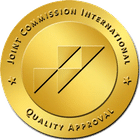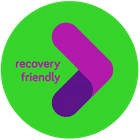The prominence of Adderall is on the rise in the United States as ADHD diagnoses continue to trend upward each year. The medication, now a household name even among young teens and adolescents, warrants a heavy examination – primarily due to its popularity, uses, risks for abuse, and other facets worth bringing attention to. Adderall is one of the most popular non-pain medications in the world, so it’s essential that every person who has or will consider it in the future knows everything they need to know. Thus, a complete rundown of Adderall dangers, shortage, and abuse is in order.
GateHouse Treatment frequently highlights Adderall in our helpful resources detailing substance abuse. While the medication isn’t in the same echelon as other hazardous substances like heroin, methamphetamine, cocaine, and fentanyl in terms of blatant risk factors, Adderall is a sneaky drug that many fail to view as dangerous. This rundown will showcase our blogs that discuss Adderall dangers, shortage, and abuse while providing healthy alternatives.
What is the Purpose of Adderall?
In Adderall Abuse: 4 Dangers You Should Know, we discussed Adderall dangers, shortage, and abuse and delved into the primary reasons why a person would want a prescription for Adderall. Due to its role as a stimulant and amphetamine, most users take the medication to treat symptoms of attention-deficit hyperactivity disorder (ADHD) and narcolepsy. Adderall increases attention span and helps individuals focus on particular activities without getting side-tracked.
Many take Adderall to achieve a stimulating burst of energy akin to the effects of methamphetamine and other intense stimulants. As a result, people often abuse the medication and take it for reasons other than treating ADHD or narcolepsy, such as partying or in a school or work setting. If someone can’t focus enough at school or work, they’ll take a dosage to crank out the last remaining objectives; if they are ready to go out or partake in festivities, they’ll take a dosage to give an extra uppity feeling while socializing. While it may bring forth these desired effects, individuals misusing the medication will quickly find themselves vulnerable to many health risks and dangers.
What Makes Adderall So Dangerous?
Adderall, despite its widespread use and popularity, carries several inherent dangers that individuals shouldn’t overlook. As discussed in Adderall Abuse: 4 Dangers You Should Know, a primary risk is its potential for abuse and addiction. The medication’s stimulant properties can catalyze euphoria and increased energy, leading some individuals to misuse it for recreational purposes or as a performance-enhancing drug. Prolonged misuse or high-dose use can result in dependence, tolerance, and addiction, with individuals experiencing withdrawal symptoms when attempting to stop using Adderall.
Another concern is the shortage of legitimate Adderall medications, contributing to the rise of counterfeit or illegally obtained versions. These fake drugs can contain unknown and potentially dangerous substances, putting individuals at further risk. The lack of regulation and oversight in the illicit market makes it difficult to determine the safety and efficacy of such products.
What Are the Symptoms of Adderall Abuse?
Recognizing the symptoms of Adderall abuse is essential in identifying potential misuse and seeking appropriate intervention. Individuals who abuse Adderall may exhibit several signs and symptoms that indicate a problem:
1. Increased Energy and Alertness – One of the primary effects of Adderall abuse is a significant surge in energy levels. Individuals may appear more awake, alert, and restless, even when it is inconsistent with their usual behavior.
2. Changes in Sleep Patterns – Adderall abuse can disrupt standard sleep patterns, leading to insomnia or disturbed sleep. Users may find it challenging to fall asleep or experience a decrease in the quality and duration of sleep.
3. Decreased Appetite and Weight Loss – Adderall is known to suppress appetite, and individuals abusing the drug may experience a noticeable reduction in hunger and subsequent weight loss. Unintentional and rapid weight loss can be a red flag for Adderall abuse.
4. Increased Heart Rate and Blood Pressure – Stimulant medications like Adderall can cause significant increases in heart rate and blood pressure. Prolonged abuse can strain the cardiovascular system, potentially leading to heart problems and other complications.
5. Psychological and Behavioral Changes – Adderall abuse can result in various psychological and behavioral changes. Individuals may become more irritable, agitated, or anxious. They may also exhibit mood swings, difficulty concentrating, or exhibit signs of paranoia or even hallucinations in extreme cases.
6. Neglecting Responsibilities and Relationships – One of the hallmarks of substance abuse is a decline in personal and professional responsibilities. Individuals abusing Adderall may neglect their obligations, such as schoolwork, job performance, or family responsibilities, due to preoccupation with obtaining and using the drug.
7. Withdrawal Symptoms – When individuals become physically dependent on Adderall, attempting to stop or reduce use can lead to withdrawal symptoms. These may include fatigue, depression, irritability, and intense cravings for the drug.
What is the Adderall Shortage Crisis?
In The Adderall Shortage Crisis Explained In 3 Facts, we discussed the Adderall shortage crisis and what it means in terms of the medication’s accessibility. The blog highlighted how in October of 2022, the FDA announced a nationwide shortage of Adderall after manufacturing delays and an inability to meet the growing demands. This crisis primarily arose due to the DEA’s regulation of Adderall production – meaning the DEA limits the annual production ceilings for the medication and caps the amount of raw materials companies could buy to produce it.
The Coronavirus pandemic had a prominent role in these limitations implemented by the DEA. As the blog explains, the number of individuals diagnosed with ADHD who received an Adderall prescription rose by 10.4% during the pandemic. While this spike did shed light on the growing awareness of ADHD and mental health, many felt as if the rise was for all the wrong reasons. People found it difficult to sit at home and focus on work, and the nationwide shutdown meant they couldn’t refill their prescriptions. Experts still aren’t 100% sure whether these people needed the medication to treat ADHD or if they received a prescription for recreational purposes during quarantine. Either way, the crisis created a supply chain issue that lingers nearly a year later.
Why is Adderall Awareness So Important?
Adderall awareness is crucial for understanding the potential risks and side effects associated with the medication. It enables individuals to make informed decisions about its use and weigh the benefits against the potential dangers. By increasing awareness, individuals can recognize the signs of misuse and abuse, leading to early intervention and support for those struggling with Adderall addiction. Open dialogue about mental health and substance abuse helps reduce stigma and encourages individuals to seek help and share their experiences.
Awareness of alternative treatments for conditions like ADHD and narcolepsy also provides individuals with more options, such as those discussed in The Dangers of Adderall: Who’s at Risk and 2 Healthy Alternatives, allowing them to explore interventions better suited to their needs.
Learn More About Adderall Dangers, Shortage, and Abuse
At GateHouse Treatment, we strive to provide individuals with as many resources on substance use as possible, which extends to Adderall. Our expansive blog page covers various substances, their effects, and ways to receive reliable and sustainable treatment. If you or someone you know shows signs of Adderall abuse, don’t wait. Contact us today to learn how we can help. Get in touch by calling (855) 448-3588 or through our website.
- Cymbalta Withdrawal: Causes, Symptoms, And Management - October 12, 2023
- Boredom in Recovery: 5 Tips to Avoid Relapse - October 6, 2023
- Overconfidence and Rehab: Avoiding Relapse - October 4, 2023




